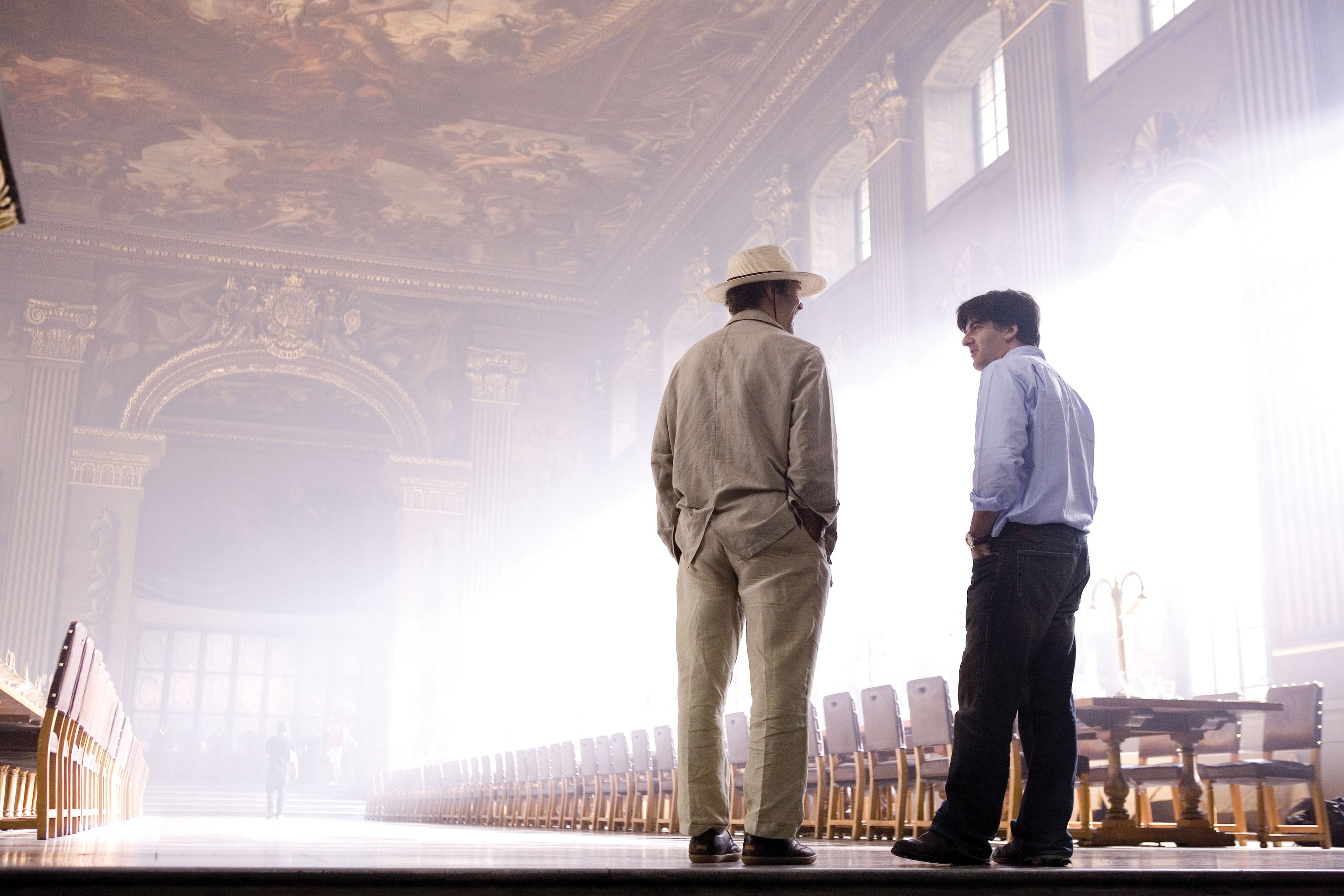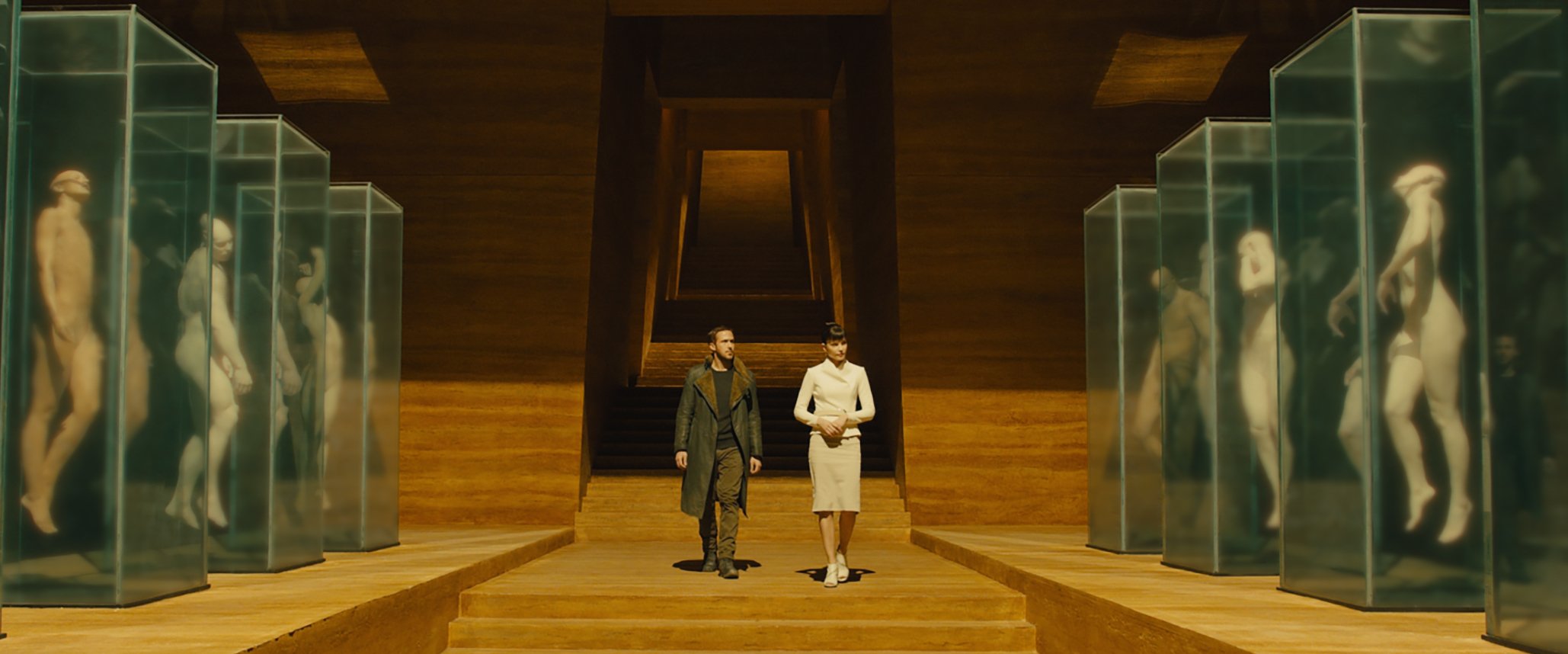
Blade Runner 2049: Designing the Future
Production designer Dennis Gassner discusses the “brutal” environments of director Denis Villeneuve’s ambitious sequel.
Production designer Dennis Gassner discusses the “brutal” environments of director Denis Villeneuve’s ambitious sequel.
By Noah Kadner
Unit photography by Stephen Vaughan, courtesy of Alcon Entertainment
Picking up 30 years after the events of director Ridley Scott’s sci-fi feature Blade Runner, Denis Villeneuve’s Blade Runner 2049 follows “K” (Ryan Gosling), a replicant-hunting “blade runner” for the LAPD — replicants being synthetic humans manufactured as slave labor, some of whom have shown an illegal predilection for free will and rebellion. While working a case, K makes a discovery that could have profound consequences for humans and replicants alike. As he follows one clue to the next, he eventually finds Rick Deckard (Harrison Ford), the erstwhile blade runner of the original film who’s been in hiding for three decades and who just might hold the key to unlocking the full truth behind K’s discovery.
Scott — who had partnered with cinematographer Jordan Cronenweth, ASC and production designer Lawrence G. Paull for the original Blade Runner (see AC July 1982) — returned as an executive producer for 2049, and behind the scenes, Villeneuve assembled a team of collaborators that included cinematographer Roger Deakins, ASC, BSC and production designer Dennis Gassner. Gassner’s career has spanned classics such as Field of Dreams and Bugsy as well as the recent James Bond adventures Quantum of Solace (AC Nov. ’08), Skyfall (AC Dec. ’12) and Spectre (AC Nov. ’15). Skyfall had previously teamed him with Deakins, and the two have also collaborated on several films for the Coen Brothers as well as director Sam Mendes’ Jarhead (AC Nov. ’05).
In the weeks leading up to Blade Runner 2049’s release, AC caught up with Gassner over the phone to discuss his work on the production.
[Editor’s Note: AC’s full coverage of Deakins’ work on Blade Runner 2049 will appear in our December issue.]
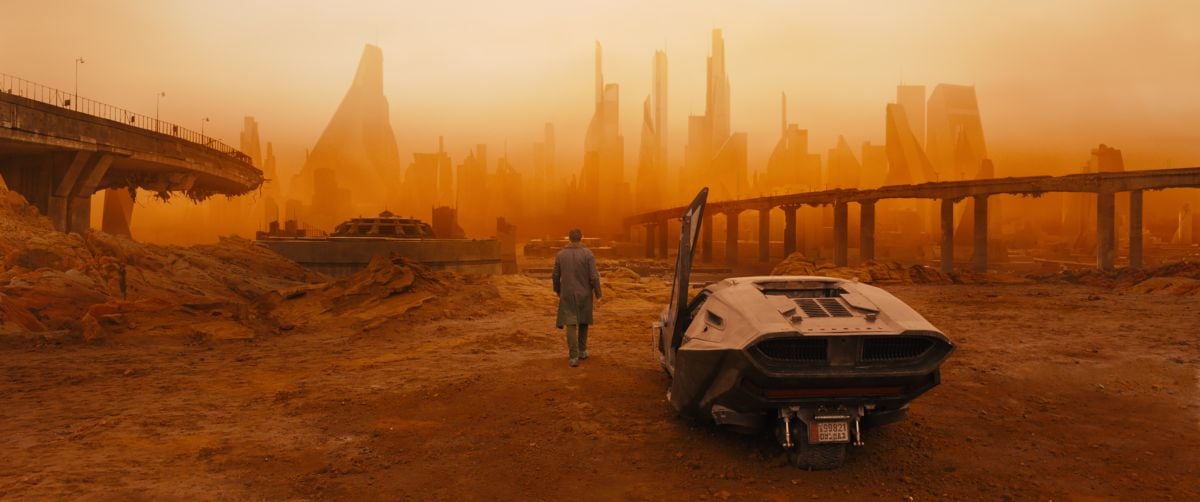
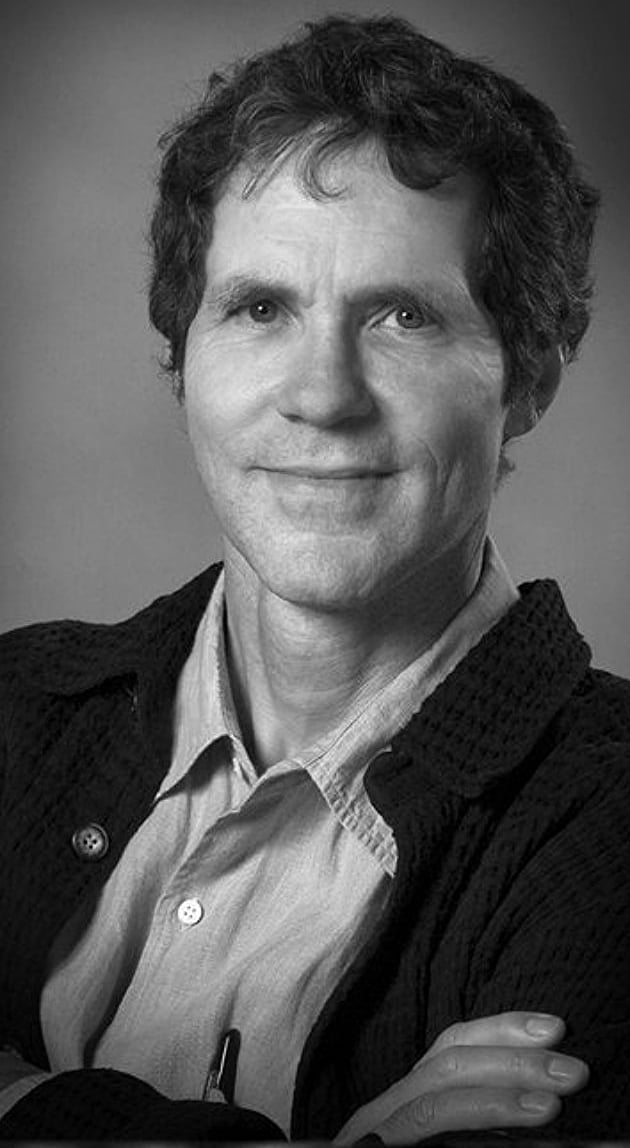
American Cinematographer: What impressions did the original Blade Runner make on you?
Dennis Gassner: In 1981 I was working at American Zoetrope, Francis Ford Coppola’s company. I was assisting Dean Tavoularis, who was Francis’ designer and did all the Godfather films and Apocalypse Now. One day, Francis called the art department, Dean picked up the phone, and Francis said, ‘There’s a guy who wants to see the neon we used for One From the Heart,’ which we had just finished and released. Dean said, ‘Dennis will take the meeting.’
So this guy showed up in the art department. I introduced myself and said, ‘My name is Dennis Gassner,’ and he said, ‘My name’s Ridley Scott.’ I walked him down to this warehouse, opened the door, and showed him two and a half miles of neon. On the way back to the art department I asked him, ‘So, what are you doing?’ He said, ‘I’m doing this little film called Blade Runner.’ I said, ‘Oh, that sounds cool.’ And it was. That’s the first time I ever met Ridley. I tracked the film while it was being made, and then, when it came out, I thought it was amazing.
More than 20 years later, I saw Ridley at a little art gallery in London while I was doing my first Bond film [Quantum of Solace]. I came up and introduced myself to him again. He said, ‘Oh, you’re the designer of the Bond film.’ I said, ‘Yeah, but I also have to tell you a little story about neon.’ After I told him the story, he said, ‘That’s amazing that it was you! Maybe we’ll work together one day.’ So, cut to the chase, and we’ve just finished Blade Runner 2049.
That was the beginning to it all; there’s a bit of predestined irony to the whole thing. When I told that story to Denis Villeneuve and his producers, they felt they had the right designer. Having that history, and having done a lot of big projects like the Bond films, I’ve learned to embrace a world and relish the experience. We had a great time doing this — but it was hard work. It was really complicated to find our own rhythm while honoring and respecting the history.
How closely did you have to hew to the designs seen in the original Blade Runner?
Gassner: Blade Runner 2049 is a continuation of the original but set 30 years later, so the environments have changed. I always like to find a touchstone word to describe the film, so when I first met Denis I asked him what that was for this movie. He thought for a second and then said, ‘Brutality.’ I asked him to expand on that, and he said, ‘It’s a harsher environment. The world has gotten much more demanding.’ In developing the architecture, it has to have that connection. The force of nature is against us, so the architecture needs to have the strength — the brutality — to stand up to it.
The first thing we actually designed was the spinner vehicle. Our main character, K, is in it for a long time and you see it a lot. We ended up developing the spinner with a lot of reference to the original film; those vehicles and their graphic angles were always key. Hardness was a dominant factor in developing the spinner.
Once we developed that, everything else fell into place around it, and we developed what I call the ‘pattern language’ of the film, with ‘brutality’ being the optimum touchstone word. Some things softened slightly, but the primary goal was to be against the elements. The world we created allowed us to define the characters as well. We had a good time doing all that.
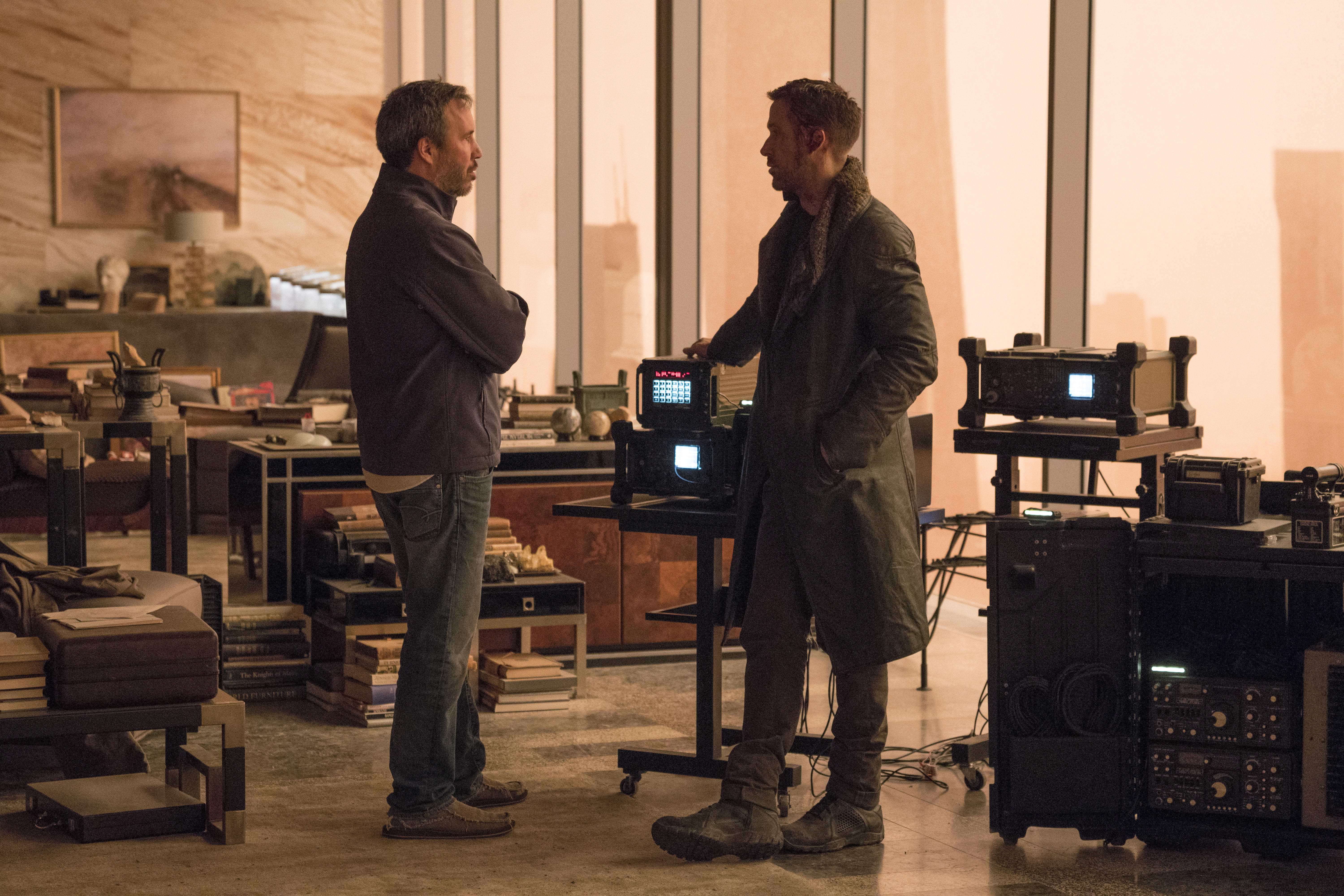
Beyond the original Blade Runner, were there other visual references that inspired your approach?
Gassner: There are bits and pieces you pick up in any development stage, and you do research — you’re searching for things that uniquely contribute to what your thought process is. I can’t say there’s anything specific, because it’s usually bits and pieces of information that start to help shape everything. It was a journey. It’s a unique balance of lots of details. I could expound on thousands of references, but it’s more about understanding the gestalt, the history [and] the language of the film that we developed.
The architecture, the design, the lighting, the set dressing, the costume design — everything supports that. We worked very closely as a team to interface with one another so that everything relates: the architecture design, the color palette, and so on.
How would you describe your collaborative relationship with Roger Deakins?
Gassner: Roger and I have known each other for 28 years, and we’ve done a lot of films. This film was particularly interesting because the original had a lot of moving light. That was an important component that we wanted to respect. We wanted to have that mood in our film as well.
Roger and I have always worked together very closely on the interface between the architecture and the lighting. That was a wonderful experience to go through [for Blade Runner 2049] — and challenging, most of the time. The mood reflects the history but is also our own. I’m really pleased with how all that worked out.
Did neon play a role in any of 2049’s practical lighting, as it did in the original?
Gassner: Actually, there wasn’t any neon in this film. It was all LED. That was just to keep it in a contemporary mode. Also, neon is extremely challenging to use, and it’s just not in favor any more.
Blade Runner famously used a number of practical locations in Los Angeles. Did 2049 adopt a similar approach?
Gassner: There’s some interface with locations in this movie, but, primarily, it’s stage-set. When we started the film, Ridley suggested that we should look at Budapest, and I thought it was fascinating. As we started to break the film down, there were possibilities in Budapest where we could use some locations. Ridley did that in The Martian as well. I like that aspect of filmmaking; it helps us connect in some way with a film.
Blade Runner 2049’s cityscapes were actually photographed with miniatures. How is it decided when something will be physically built versus being realized with CGI?
Gassner: Shooting the miniatures real-for-real was a conscious choice. There's an ‘homage factor’ in the technique, but I also think it brings a particular character to the film. We’d all done miniature work before, and I think the lighting and the feeling of something that's really there was an important aspect for this film.
This film is a combination of everything. Every discipline is being used. Generally, it becomes a matter of practicality — i.e., it’s better to do it this way with some CGI enhancement. We’re always trying to manufacture things in the smartest way for the film and the characters; we’re always serving the film and the story. That’s paramount to how it works, and it's a decision between the collective storytellers.
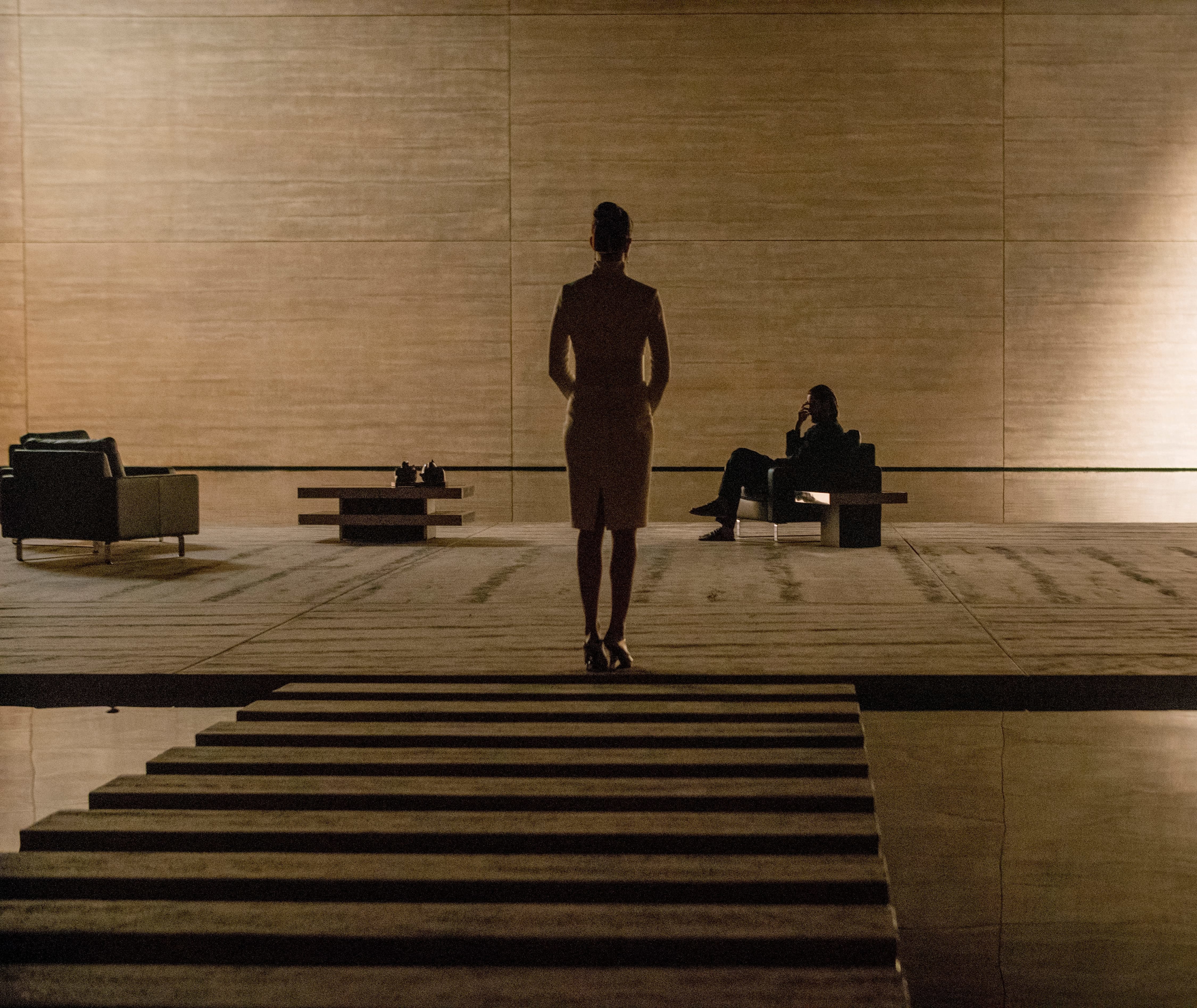
Wallace [Jared Leto], who’s absorbed the original film’s Tyrell Corp., inhabits an especially striking environment. His ‘office’ is a large platform, sparsely furnished and surrounded by water, with ripples of light playing on the chamber’s tall walls.
Gassner: We wanted to have a particular quality to that set that was unique. I told Denis that when I was researching in Japan [for an earlier project], I had gone to one of the castles there, and there was a fascinating philosophy about security to its design. And so we used water [to suggest] security within the context of that environment, and the idea that Wallace has total control. That was the idea. It all relates to story. And then, the way the lighting played on the water gave it another quality. The caustic lighting that Roger’s team developed was particularly unique. The interface of [the architecture and the lighting] was paramount — and it was dynamic and very fun.
Did any one set stand out as being particularly challenging, from a design perspective?
Gassner: Well, every film is challenging and every set is challenging. You want to get it right. In some way it’s just arriving at decisions — and it’s also timing. There was a lot to do in a relatively short amount of time. I can say everything was challenging but we got it done.
What techniques did the art department employ in the development of 2049’s look and design?
Gassner: We use every technique, whatever’s the best way to see something — models, concept illustration, research development. We use every aspect of all of those techniques. It’s an organic experience. I’ve been doing this for 35 years, and all of that experience becomes part of your consciousness.
You start by finding the mood. What we’re looking for is what we think the audience is going to appreciate, and also what fits our story and works seamlessly. I present all of the artwork that we've created in the art department; it’s in a room that allows everyone to come and see the film in continuity. The environments [need to] have a balanced quality, and that's the end result of all the hard work, nurturing [the design] and letting it grow. It’s a 24/7 scenario, immersing yourself into it — and eventually it all becomes real and we get it on film.
How did you arrive at the movie’s color palette?
Gassner: It’s relative to the story, which I won’t say too much about because I don’t want to ruin the movie for anyone. I want you to have the same experience that we’ve all had going through it. The process for me is allowing the journey to be an amazing one, which was an aspect of the original film as well. [Blade Runner 2049] starts out in black and white, and we add the color into it as we go.
There’s a technique I like to use in my own head. I always start with music, [specifically] Beethoven's Fifth [Symphony], which is that great ‘dah-dah-dah-dahhh!’ You have to wake up the people in the audience and give them something bold. Then you can play the lyrical game as the story unfolds, and let the music soften, and move, and transplant itself into all of these different emotional values.
That [idea] provides me with the motivation for what the color is going to feel like. With Denis and Roger, we start looking at that, and seeing how it feels emotionally, what we need to soften and adjust, getting hotter or colder as we start adding colors to the black-and-white imagery. It’s like a painting: You start with a pencil sketch, and develop it through palettes. You go through an emotional ride in order to look for an end result that hopefully the audience will appreciate.
